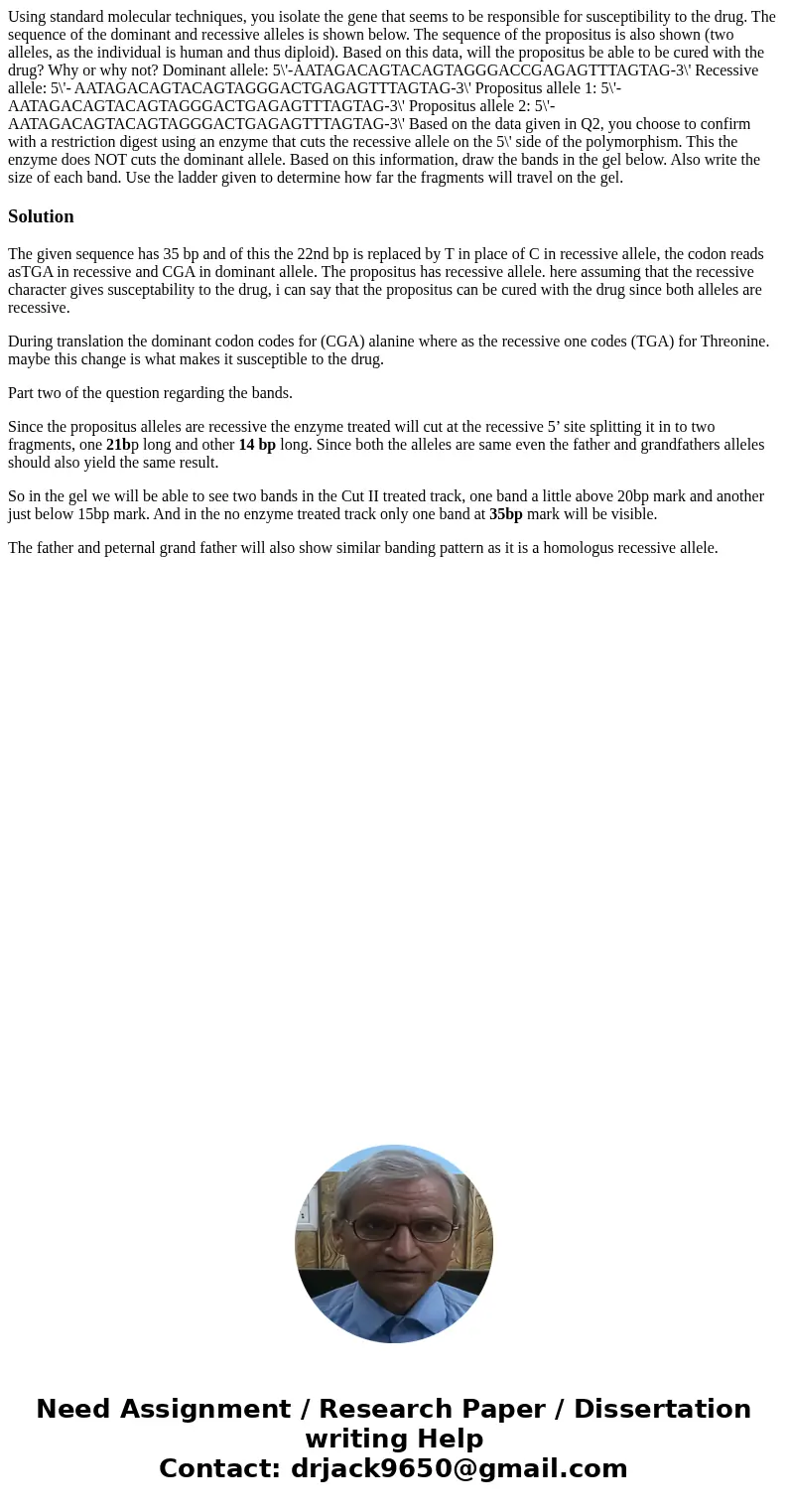Using standard molecular techniques you isolate the gene tha
Solution
The given sequence has 35 bp and of this the 22nd bp is replaced by T in place of C in recessive allele, the codon reads asTGA in recessive and CGA in dominant allele. The propositus has recessive allele. here assuming that the recessive character gives susceptability to the drug, i can say that the propositus can be cured with the drug since both alleles are recessive.
During translation the dominant codon codes for (CGA) alanine where as the recessive one codes (TGA) for Threonine. maybe this change is what makes it susceptible to the drug.
Part two of the question regarding the bands.
Since the propositus alleles are recessive the enzyme treated will cut at the recessive 5’ site splitting it in to two fragments, one 21bp long and other 14 bp long. Since both the alleles are same even the father and grandfathers alleles should also yield the same result.
So in the gel we will be able to see two bands in the Cut II treated track, one band a little above 20bp mark and another just below 15bp mark. And in the no enzyme treated track only one band at 35bp mark will be visible.
The father and peternal grand father will also show similar banding pattern as it is a homologus recessive allele.

 Homework Sourse
Homework Sourse